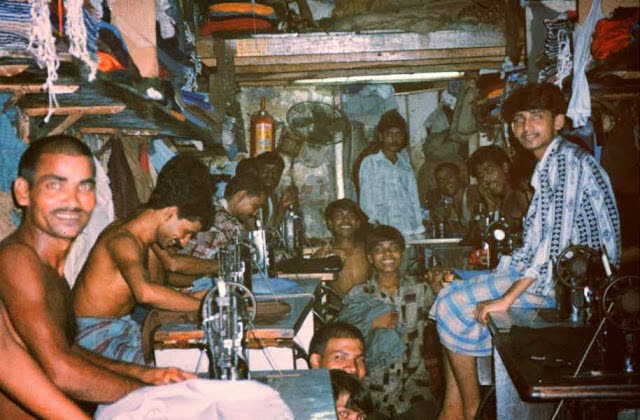Now stop and think. Someone died making tee-shirts. It sounds ridiculous doesn't it? But sadly, it is not. As a matter of fact, over a thousand people died in one day less than six months ago. And hundreds more have died since that time making fast-fashions for western consumers.
 |
| {Source} Rescue operations at the Rana Plaza building. Photograph: Rehman Asad/Rehman Asad/Demotix/Corbis |
The flashy marketing campaigns are a facade for what is behind the product. Workers are paid less than a dollar a day working long hours in unsafe conditions. Many are beaten and threatened. It is not fiction, it is a horror story. A true life horror story.
This shouldn't be anything new unless you have been living under a rock for decades. Naomi Klein's book No Logo published in 1999 examined the road we were travelling where corporations cared more about the marketing of a product than the actual manufacturing of said product. We've been on the slippery slope for quite some time.
Last year, Elizabeth's Cline's Overdressed: The Shockingly High Cost of Cheap Fashion took a look at fast fashion, the race to the bottom and the tricks that retailers do to make consumers think they are getting a real bargain. But we're not. Instead when we purchase fast-fashion we're part of the problem. This post is not meant to lecture. I really hope that it is not coming across as such.
Really, this is a rant. Oh goodness, my wardrobe has ready-to-wear items that I don't know where they were made or under what conditions. I'm trying to change. I'm trying to educate myself. I trying to pay attention to the stories in the news that are warning me that children, women and men are being exploited.
Awareness is a first step.
CBC's Fifth Estate did a story on fast-fashion that aired this weekend. Check it out. You might want to make sure you have a box of kleenex beside you. And the Globe and Mail ran "Spinning Tragedy: The True Cost of a T-Shirt" this weekend, an investigative piece into the fast-fashion industry like so many other papers have focused their lens. There are so many examples and with the internet it is at the tip of our fingertips.
For my part, I vow to stop buying ready-to-wear and sew my own clothing and to buy fair trade fabric whenever possible.
What about you what will you do to mark today?












I'm reading Overdressed now. Really eye opening!
ReplyDeleteIt really is an eye-opener! Not just on the state of fast-fashion but what Cline wrote about "Frankenfabric." It certainly makes me take a closer look at those labels when shopping for fabric.
ReplyDeleteI wish more people would become better informed about these things, everyone I work with runs down to the US to do their shopping as cheaply as possible going on and on about their $10 tops and $20 shoes and they have no interest in not continuing that way, it makes me sad.
ReplyDeleteI know what you mean, I have family and friends that are avid cross-border shoppers and it is all about quantity over quality for many. I may not be able to influence them but it won't stop me from trying to change my own ways and think about the products I purchase.
Delete